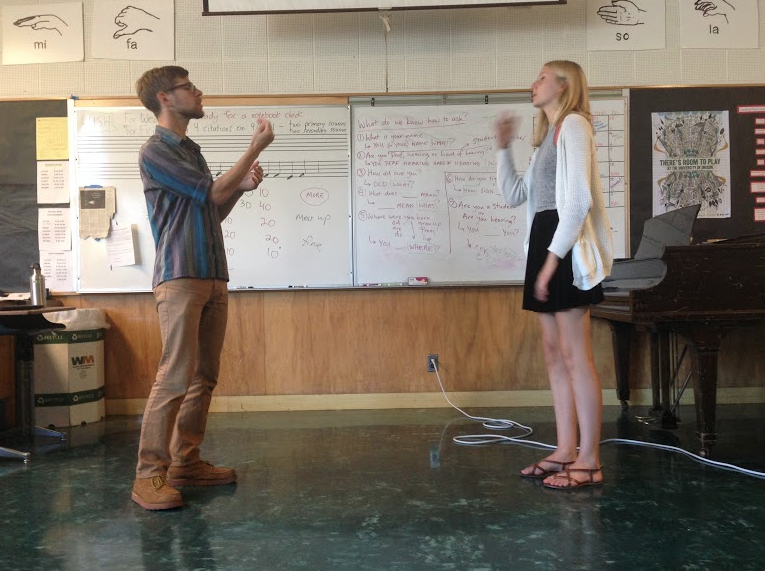Signing in: Lincoln introduces American Sign Language as a class
ASL teacher Ben Malbin demonstrates sign language to sophomore Julia Dodson.
On top of Mandarin, Arabic, Spanish, German and French, students now have a sixth language option: American Sign Language.
The course is confined to simply first year, but as time goes on teacher Ben Malbin hopes to expand the program. It will focus on learning the language as well as deaf history and people, according to the course guide.
Like the course he teaches, Malbin is new to Lincoln this year. Fresh from five years at Arbor middle school, where he mainly taught ASL and humanities, he was looking to make a bigger impact.
“I wanted to try teaching at a bigger public school,” Malbin says. “Just a bigger group of kids.”
Malbin went from teaching at a school with 23 students per grade to Lincoln, where he teaches five sections of classes, each with 25 to 34 students.
“When I taught [at Arbor], I knew everybody really, really well,” he says. “So at Lincoln it’s hard to go immediately to teaching 170 students who I want to get to know but it’s harder.”
It’s not all bad, though. “What I appreciate having at Lincoln is I think it’s a brilliant group of teachers. I really love interacting with everyone that I’ve met here.”
While Lincoln might feel foreign to him, the city feels like home. A native of Portland, Malbin attended Wilson High School. He did not have any formal experience with the language until college, though. He enrolled an ASL class and his teacher got him interested in the New York Deaf Theater.
“I went [to the theater] and spent a few months learning sign language and hanging out with deaf people,” he says. “It was kind of like an immersion experience.”
Now, he shares that experience with students. Senior Preeta Hopwood was first attracted to the class for its uniqueness compared to other courses.
“I signed up because I thought it would be a fun class and that it would be a bit lighter and not as completely serious as a lot of classes,” she says. “The other languages are geared towards IB (International Baccalaureate), but this is more geared towards conversation rather than tests, especially because you can’t write down things.”
After three classes, Hopwood doesn’t regret the decision. “It’s quite fun,” she says. “and I think it’s quite well taught.” She cited the diversity of grade levels as another strength of the course.
While some might hesitate to learn a language that journalist John Hockenberry deems “on the brink of extinction,” Malbin doesn’t see it that way at all.
“In my life I’ve used ASL quite a bit,” he says. “I’ve met different people, I’ve worked in a restaurant, I use ASL.”
And because of his class, many others who will do the same.

